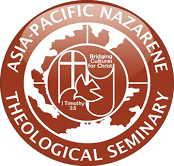- Resource Types
- Resource Languages
- Institutional Repository
 Visit the home page
Visit the home page
About Site Language
WHDL is viewable in multiple languages. Use the pull-down menu to select a language to view the site.
I changed my language, but I’m still seeing resources in the other languages?
If a resource or text has not been translated into your selected language, it will appear in the initially added language. We are always looking for help translating these resources. If you can help, contact us!
WHDL - 00020716


This capstone explores Nazarene missions in Papua New Guinea (PNG). Beginning in the 1950’s, the Church of the Nazarene has been active in spreading the gospel and the message of holiness throughout the interior of the country. Most of the missionaries to PNG have come from the United States, which leads to a massive cultural divide between the missionaries and those to whom they are ministering. It is possible that there are not two countries as different as Papua New Guinea and the United States, which leads to many challenges and possible pitfalls as the church carries out its work. By studying the history of the church, the culture, and the stories that are told by the missionaries of the past as well as those currently serving on the field, one can begin to gain a better understanding of which strategies have been effective and which ones have failed. Understanding what went wrong and what cultural expectations or values were misunderstood can help future missionaries be more effective. Combining a knowledge of the country's history, the cultural values, and the experiences of missionaries will begin to create a framework of how the holiness message can be adapted to the people of Papua New Guinea. Through the sixteen questionnaire responses received by missionaries, it was discovered that animism, domestic violence, witchcraft, polygamy, tribal fighting, and a culture of revenge have been some the biggest barriers to the church’s work, while the Papua New Guineans’ ability to honestly and bluntly self-assess, their communal society, and their awareness of the spiritual world have helped the gospel spread despite the difficulties. Overall, the missionaries seem to be most effective when they truly love the people, learn the language, adapt to new situations, share meals, and cover their ministry in prayer. Missionaries can instill deeper levels of discipleship when they relate the gospel to the culture they already understand. What is gleaned from this paper will be beneficial to both this author as well as future missionaries who desire to serve the people of Papua New Guinea.
6 Resources
Capstone Projects are generally designed to encourage students to think critically, solve challenging problems, and develop skills such as oral communication, public speaking, research skills, media literacy, teamwork, planning, self-sufficiency, or goal setting—i.e., skills that will help prepare them for their careers. In most cases, the projects are also interdisciplinary, in the sense that they require students to apply skills or investigate issues across many different subject areas or domains of knowledge. Capstone projects also tend to encourage students to connect their projects to community issues or problems, and to integrate outside-of-school learning experiences, including activities such as interviews, scientific observations, or internships.
2023
2023
2023
2024
2023
2024
2025
2025
n.d.
2025
2023
2024
2001
2023
2024
2025
2024
2024
2024
2024
2024
2024
2024
2024
1954